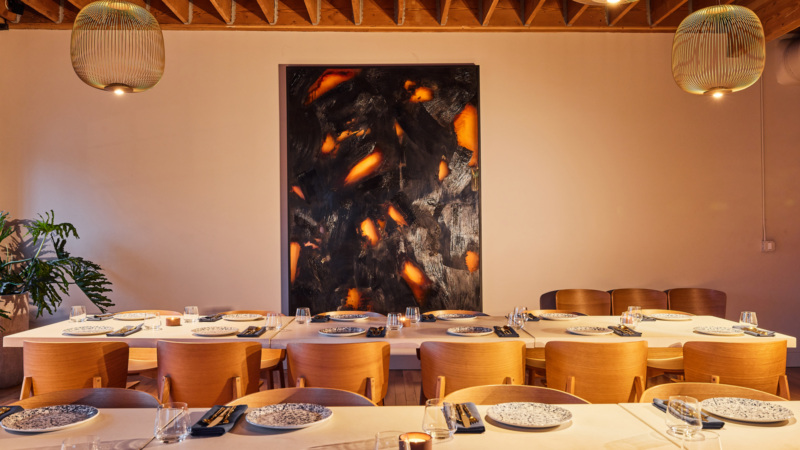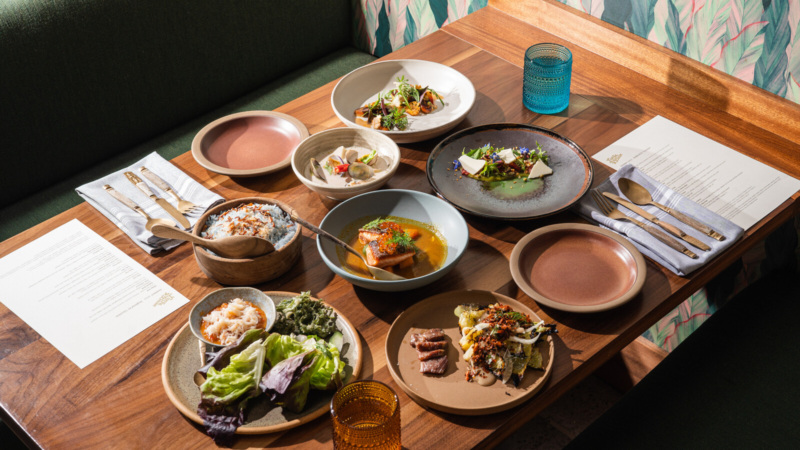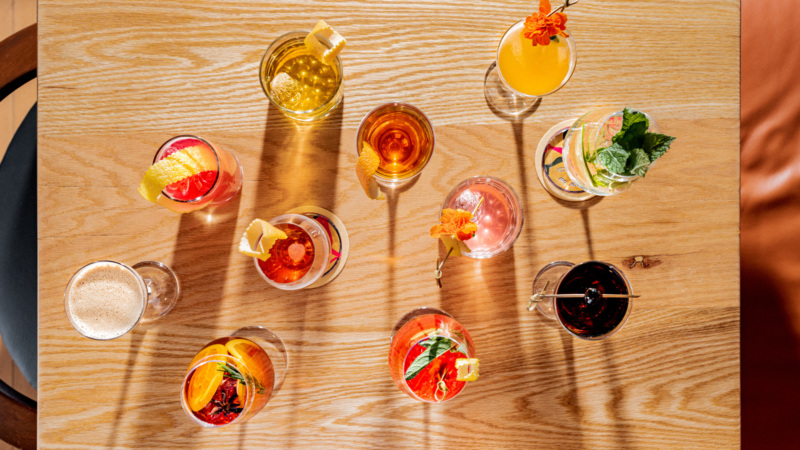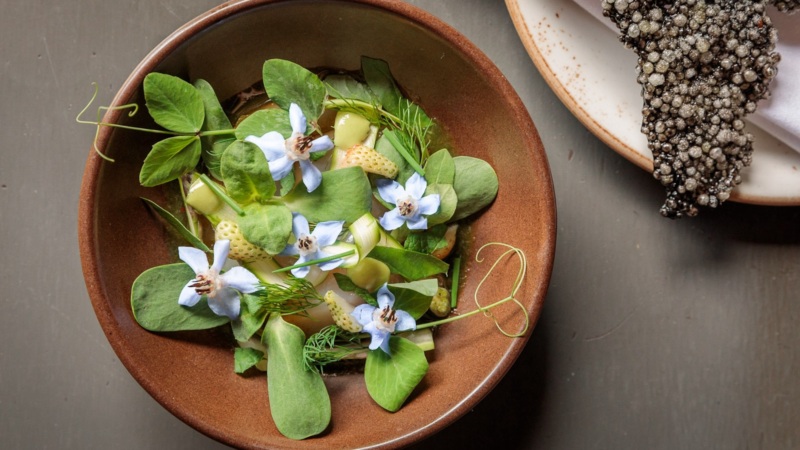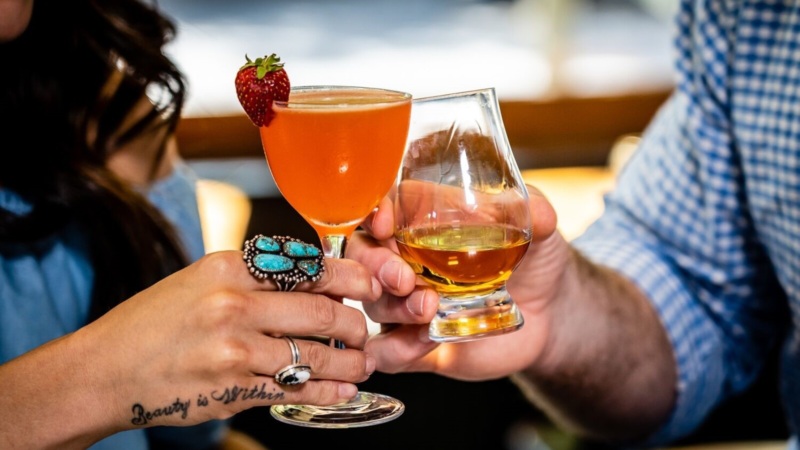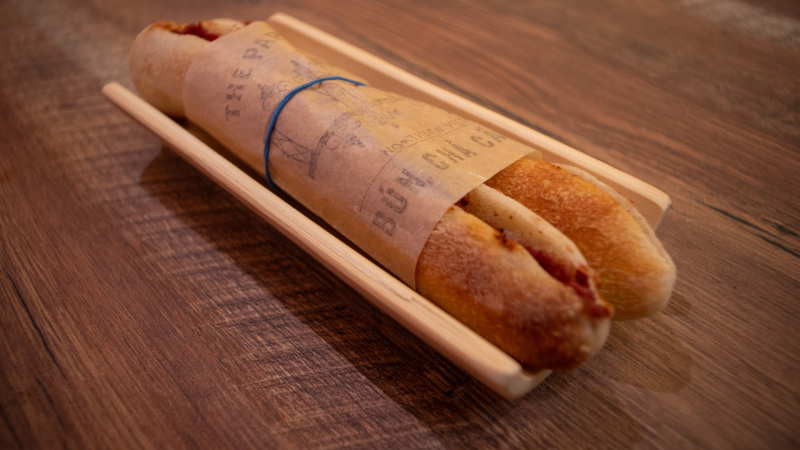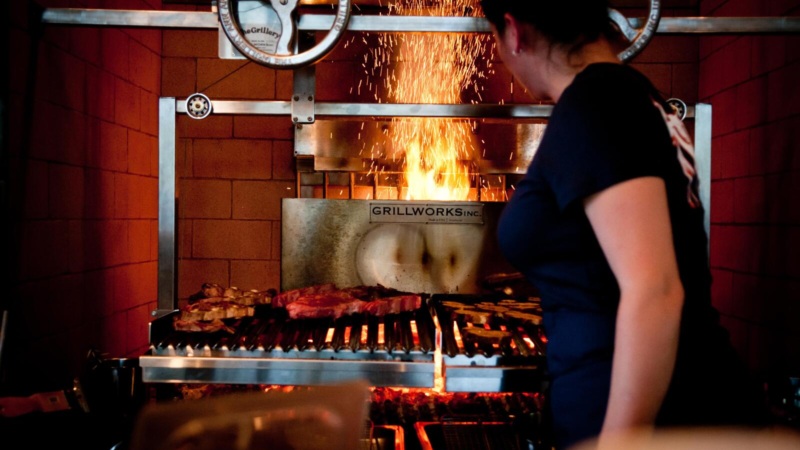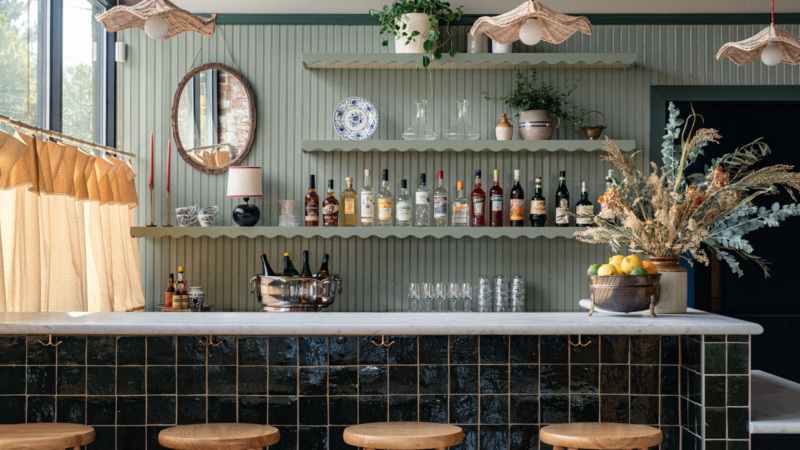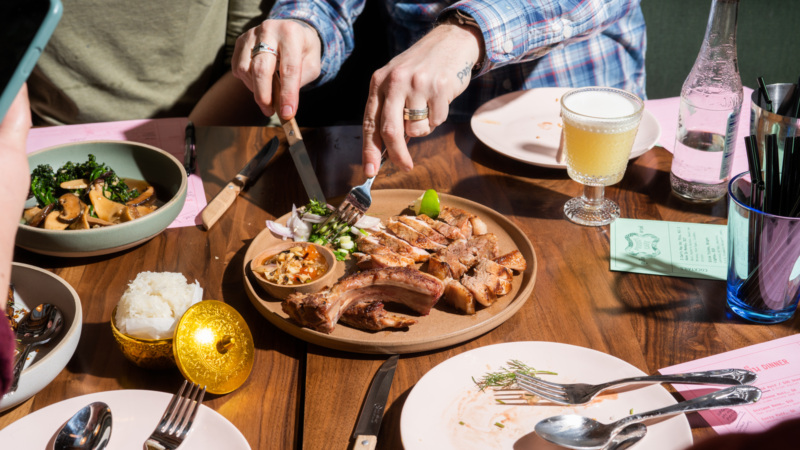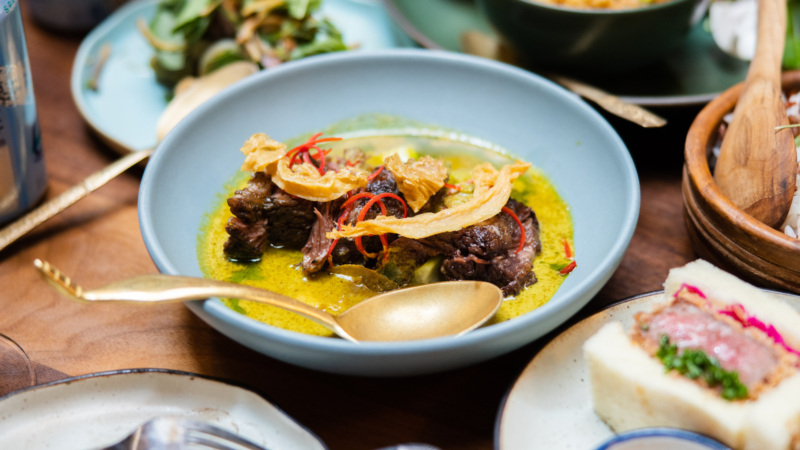
Kann’s Gregory Gourdet Pays Homage to Haiti’s Deep History — and His Northwest Home
Heritage, family, and food memories are at the heart of Kann, chef Gregory Gourdet’s long-awaited, highly-anticipated Haitian restaurant. The family-style feasts at Kann were designed to be spiked with Haitian ingredients like curry, habañero peppers, coconut, and plantain — all reminiscent of the meals Gourdet grew up eating, but also include a more global set flavors for which the James Beard Award-nominated chef is known.
But before it opens as a traditional restaurant, Kann has morphed into a pop-up. The Kann Winter Village, as it’s called, is part of a nationwide project sponsored by American Express and Resy. It’s also a chance for Gourdet, the former executive chef of Portland’s Departure, to pay homage to his Haitian culture and heritage through a rotating menu, in a particularly transportative outdoor setting.
Although Kann is his primary focus, Gourdet has quite a bit more in the works: This spring, he’ll return to Top Chef as an alumni judge for season 18. And in May, Gourdet will release his first cookbook, Everyone’s Table: Global Recipes for Modern Health (HarperCollins).
We spoke with Gourdet about his new concept and the steps he’s taking to help push the restaurant industry forward.
This interview has been lightly edited for length and clarity.
Resy: How would you describe the Kann Winter Village?
Gregory Gourdet: Kann Winter Village was designed as a COVID-conscious experience. Although Kann, as a concept, is something that I’ve been working on for a while, we created Kann Winter Village as a pop-up and with the pandemic in mind. We have a beautiful space — the Redd is an old metal works historic building that’s 8,000 square feet. And the kitchen is huge, which is great for social distancing. We’re in Southeast Portland and we’ve transformed one-quarter of the parking lot into a gated dining area with beautiful yurts. Our design was inspired by the Pacific Northwest, and it’s decorated with trees, lights, and flowers. Each yurt is individually decorated, heated, and comes with its own sound system.
But outside of that is the story of Kann. What we’re presenting is the story of my heritage and my dive into Haitian cooking with the recipes that my family made when I was growing up and the dishes that are iconic to Haiti. Sometimes these dishes are shown in the most traditional take that I can offer. Other times the dishes are a culmination of flavors, inspired by Haiti and the Pacific Northwest.
With your current menu, you’re taking us on a personal journey of your Haitian heritage, and your other influences. It’s also significant because it celebrates Black History Month. How did you select the dishes?
In addition to Haitian flavors, I wanted to explore some of the African flavors that are obviously part of the foundation of Haiti. The enslaved people who were brought to Haiti were mostly taken from West and Central Africa, so for this menu, there are a couple of dishes that were inspired by West Africa — the beef stew made with short ribs and the collard greens that are cooked in a peanut cream. The menu is rounded out by traditional Haitian dishes. We have a fish in sauce, which is a very traditional Haitian-style fish that is cooked with peppers, onion, and habañero. And we have this Haitian black mushroom rice that’s made with djon djon, a mushroom that’s native to Northern Haiti. It produces a tea which we steam the rice with to create this really beautiful black rice that’s complex and has some umami. My mother mails the mushrooms to me from Miami. It feels good to be able to bring something so specifically Haitian to a new audience. It’s exciting.
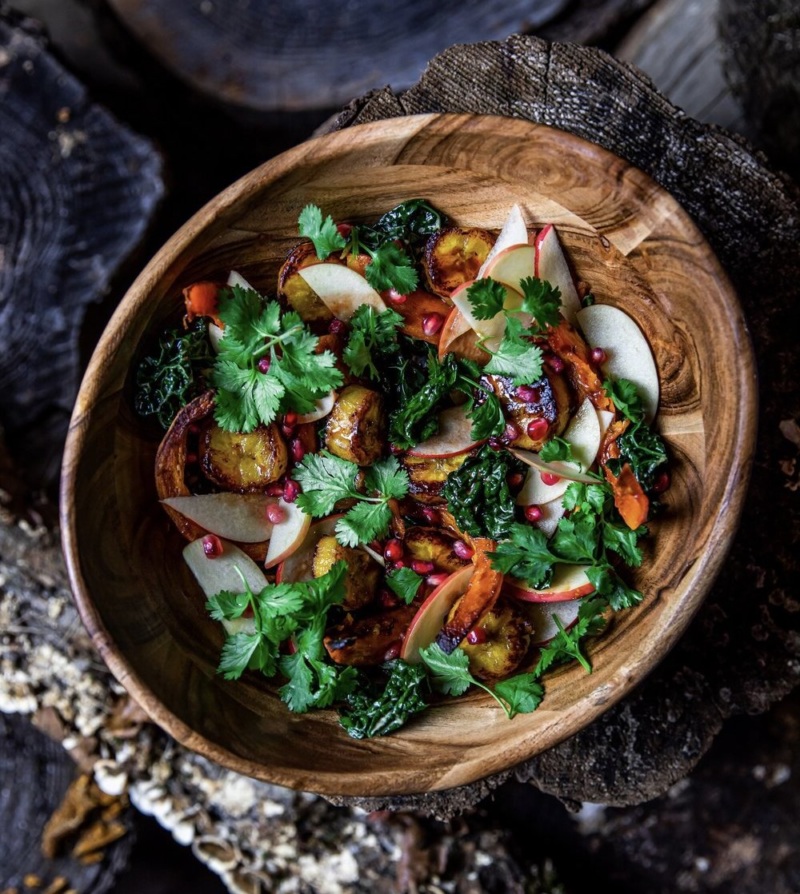

I was struck by Kann’s mission statement. Why did you feel it important to acknowledge the impacts of colonialism and the murder of George Floyd?
We can’t forget about these things. For me, as a person of color, and as a Black man, it’s really important that we keep talking about these things. And with Kann being such a personal project, I feel like it would be impossible to separate my personal identity from this restaurant. Just as passionately as I go into the sourcing of the ingredients to make sure that you’re tasting authentic bits of Haiti; I will go into the politics and the social justice issues which I think are important.
The statement also speaks to the framework of inclusivity you’ve built within your team. Are you hopeful that your colleagues in the restaurant industry will follow your lead, and do the hard work necessary to push the industry forward?
I am. I think the restaurant industry had a huge reckoning last year. A lot of workers raised their voices. And, personally, I had to look at how I have led. It became clear that I made some choices that probably weren’t the best for everyone. So I had to take a moment to stop and rethink. It was a learning experience and it was very important to tackle those issues head-on. That’s why at Kann it was important for us to have multiple systems in place so that we could kind of be the change that we want to see. I think it’s important to use your resources to help others and I hope that people will see that’s what we’re trying to do at Kann.
For 20 days in February, Kann has been donating $25 of each guest ticket to a variety of community-based organizations. What inspired you to give back during Black History Month, and how did you select each group?
As a team, we always knew that we wanted to give back in some way. We felt that Black History Month was really the perfect time to partner with all of these great organizations. We have a lot of friends and colleagues that are part of these organizations, groups, and small businesses, and we understand that 2020 was very hard for many of them. We just wanted to share our resources and our platform.
Some great organizations immediately came to mind, like Feed the Mass and Equitable Giving Circle, but we intentionally wanted to give to a wide range of Black and brown groups from schools for homeless children in Haiti, to organizations in Portland that pair youth with veterans and go on outdoor adventures together. There are so many Black and brown organizations doing good work, and we wanted to try and support as diverse a group as possible.
Community seems to be central to your work. Where does your deep valuing of it come from?
Haiti was the first free Black republic in the world. It was the first country to successfully lead a slave revolt. So, when I think about Haitian food and what Haiti means to me, that story is extremely important.
When we talk about all of the social justice issues that came up in 2020 — equality, equity, and making restaurant industry work spaces better; I knew all of those things had to be of importance.
I wanted to make the most of this pop-up and create a dining experience where people felt very COVID-safe. I wanted to serve Haitian cuisine and represent all of these beautiful global BIPOC flavors. But also, I wanted to have a social justice mission behind our concept. I wanted representation in our staff and wanted [women in] leadership in the kitchen. And I wanted to give back to the community. We’re able to do all of those things.
You’re telling the story of Haiti’s rich culture through food, but also in other ways, through tea and woodwork, for example. Why were those details important to you?
Indeed. I think for me, I’ve always wanted the restaurant experience to be about transporting the guest to a different place. This is my first restaurant on my own, so every detail is extremely important to me and they’re all part of the concept.
I thought about the food and what it gets served, and about sitting in a yurt on a cold winter night and the flavors I’d like my guests to part with. I thought about Te Jènjanm, the Haitian tea that my father made, and how our guests could hold a warm cup of that in their hands, tasting the tea as one of their last few sips of the evening. All of these things are extremely important.
I have a team that works with me to make all of those details known. We believe that those details help create an experience that will take diners to a new place. After all, we’re talking about people who haven’t dined in a year. People have told us that they literally have not dined at a restaurant in eleven months. They’re getting babysitters and getting COVID-tested just so they can dine here. Our guests are making a big effort in joining us and we want to make sure that no detail is missed so they’ll have a magical time.
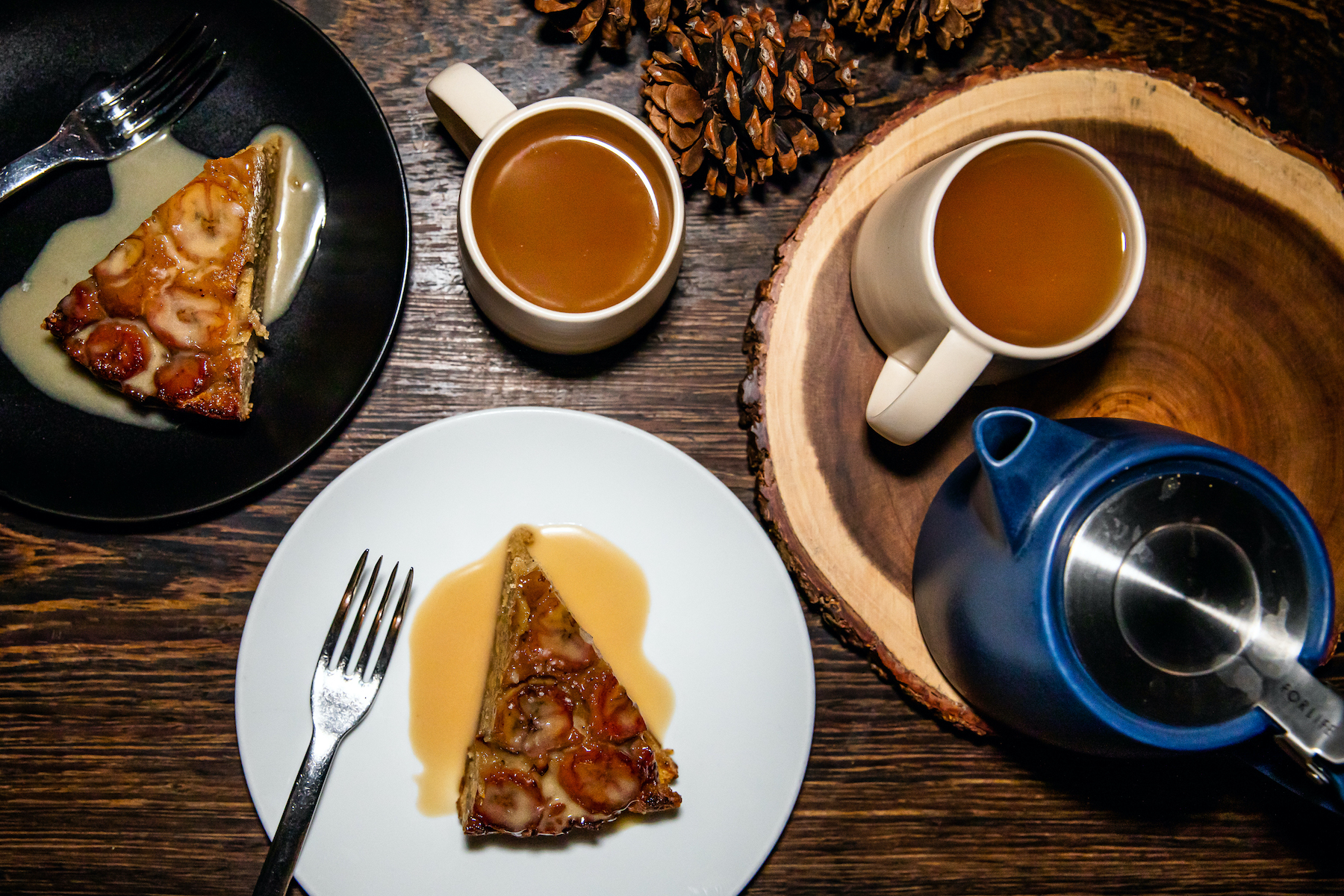

By launching Kann as a pop-up first, during a pandemic, what insights have you gained as you prepare to open it as a brick-and-mortar restaurant?
I’ve definitely learned a lot. I’ve learned a lot about the mechanics of a kitchen. I’ve learned a lot about the intricacies of a staff and that no matter what, there will always be a lot of different personalities in a group. But I think trying to convince people that we are all working for the same goal and that no one person is greater or smaller — making sure my team really believes in that — is something I will definitely continue working on when we open the brick-and-mortar. And there are a lot of details that go into that, but it’s really about thinking differently.
Overall, I’ve learned that opening a restaurant is really hard. I’ve worked everyday since December. Honestly, I’ve worked almost every single day on this project since the end of October. I’ve physically been in the restaurant every single day since we opened, so it’s a lot. I look forward to having a little downtime this summer, maybe doing a small, summer pop-up, and then refocusing on trying to get the brick-and-mortar restaurant open in 2022.
Angela Burke is a Chicago-based food writer. Follow her on Instagram and Twitter.


